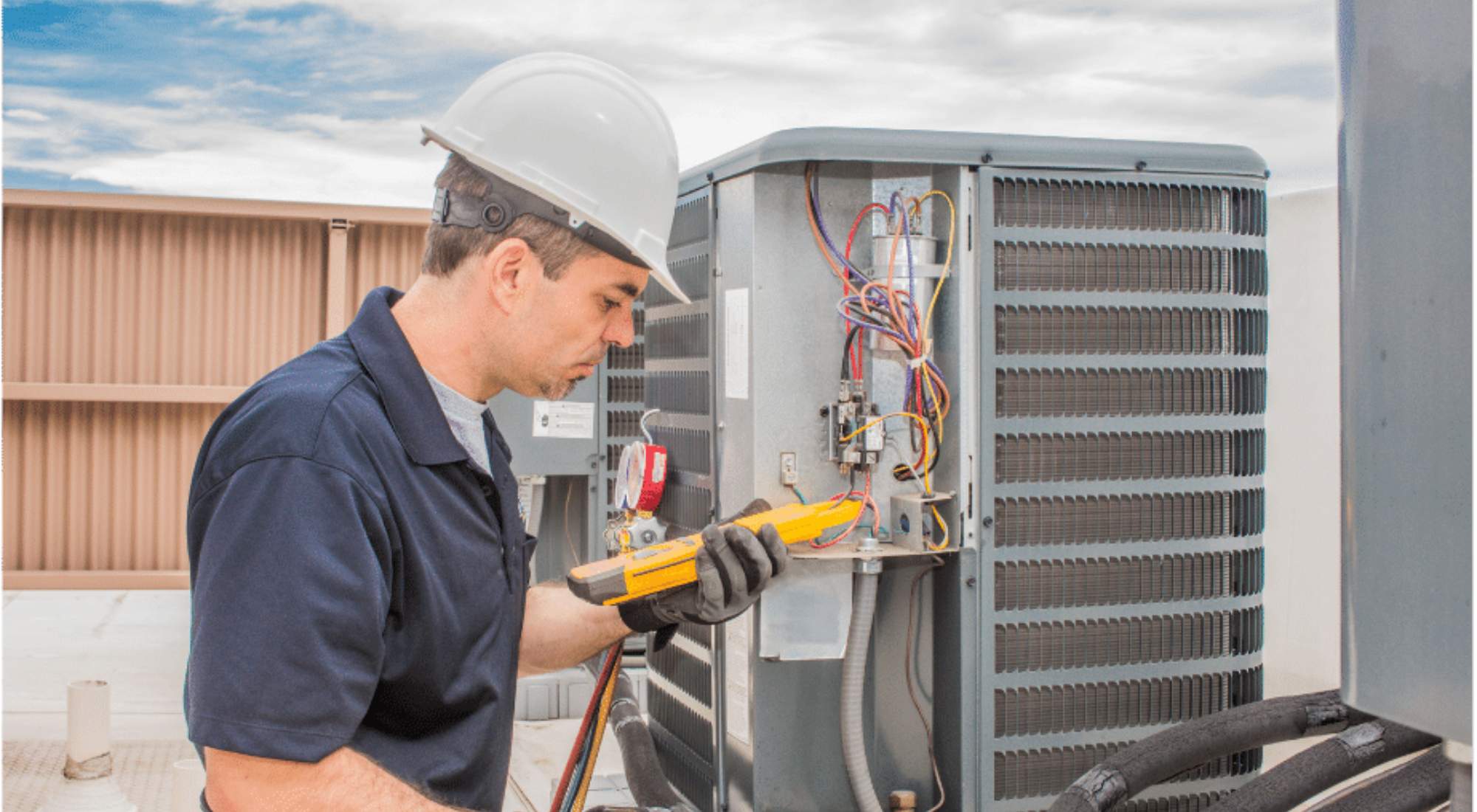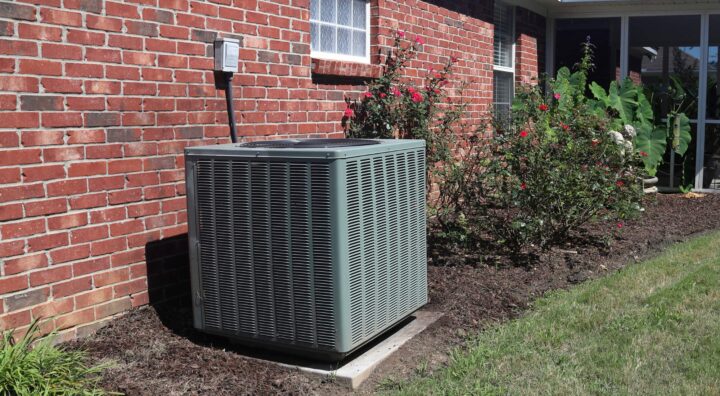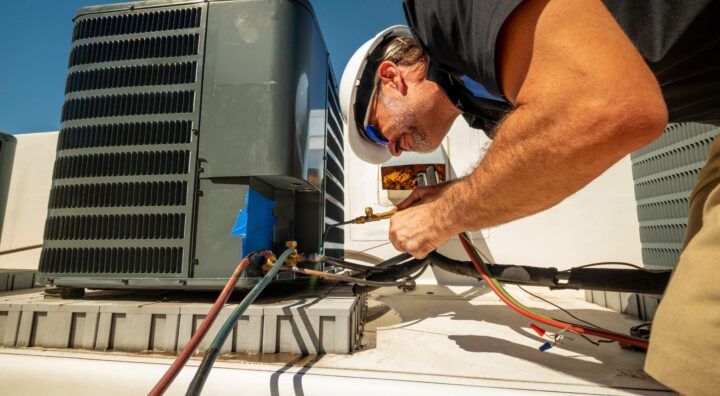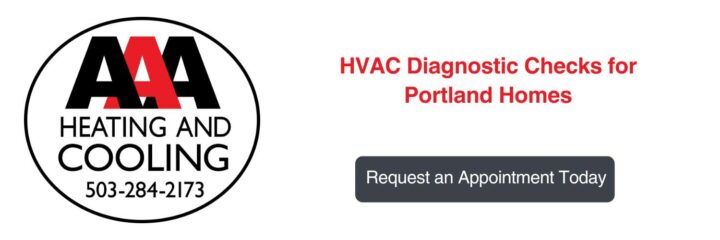
Imagine it is the hottest day of the year and your AC goes out. You are stuck in a hot, sticky house until emergency repairs can be done on your HVAC system.
What if this could have been avoided with a simple check?
That’s where HVAC diagnostic checks come into play. Many times HVAC malfunctions start with a small, inexpensive issue that can be detected with an annual HVAC diagnostic check.
Let’s dive into some common issues found during a diagnostic check, where you should be checking, and how to perform a diagnostic check. Being proactive about HVAC diagnostic checks can give you peace of mind, more money in your pocket, and fewer surprise HVAC
Table of Contents
- What Is an HVAC Diagnostic Check?
- Common Issues Detected During HVAC Diagnostic Checks
- Components of an HVAC System Involved in Diagnostics
- How To Perform an HVAC Diagnostic Check
- When Should I Have an HVAC Diagnostic Check Performed?
- Identify Problems With Your HVAC System — Let AAA Heating & Cooling Run an HVAC Diagnostic Check
What Is an HVAC Diagnostic Check?
An HVAC diagnostic check is an inspection and performance test conducted on a heating, ventilation, and air conditioning (HVAC) system. It is used to identify:
- Efficiency
- Malfunctions
- Wear
- Required maintenance
- Safety problems
To ensure your system runs smoothly, it is recommended to have a certified HVAC technician perform a diagnostic check and service the HVAC if any issues are found.
Having an HVAC diagnostic check can be beneficial to:
- Identify problems early
- Improve energy efficiency
- Prevent unexpected breakdowns
- Extend equipment lifespan
- Ensure safety
- Maintain indoor comfort and air quality
Common Issues Detected During HVAC Diagnostic Checks
HVAC diagnostic checks are essential for maintaining the health of your HVAC system and ensuring optimal air quality in your home. Oftentimes, issues are detected due to everyday wear and tear. It is essential to have these checks performed at least once a year by a certified heating and cooling specialist, such as AAA Heating and Cooling, to ensure your system is functioning correctly.
Refrigerant Leaks
Refrigerants are chemicals used to absorb and release heat in HVAC systems. This allows the system to heat and cool the air. A leak occurs when fluid escapes from the sealed lines, coils, or compressor. This can happen due to:
- Corrosion
- Cracks
- Holes
- Poor Installation
- Physical damage
- Aging components
When refrigerant leaks occur, it can cause many problems with the HVAC system, including:
- Reduced heating and cooling efficiency
- Higher energy bills
- Compressor damage
- Frozen coils
- Environmental harm
- System short-cycling
Electrical Problems
Electrical problems can be a significant cause of HVAC system failures. It can range from wiring issues to major component failures. When these problems occur, they can cause systemic damage and potentially cause fires. Electrical systems typically involve:
- Loose or damaged wires
- Tripped circuit breakers
- Faulty capacitors or contactors
- Thermostat malfunctions
- And more
Electrical problems can cause:
- System shutdown or failure to start
- Reduced performance and efficiency
- Thermostat miscommunications
- Overheating and potentially a fire
- Compressor damage
Airflow Disturbances
An airflow disturbance is when normal airflow through the system is blocked, restricted, or uneven. This can reduce the system’s efficiency while running and cause wear and tear on its components, potentially leading to system failure. Airflow disturbances typically include:
- Clogged air filters
- Blocked or closed vents
- Dirty or damaged ductwork
- Blower motor issues
- Improper design of the duct
- Obstructions in the supply air pathways
These disturbances can:
- Reduce heating or cooling efficiency
- Increase energy bills
- Cause the system to overheat or freeze
- Create strain on the blower motor, uneven room temperatures, and poor indoor air quality
Heat Exchanger Problems
In the HVAC system, the heat exchanger transfers heat from the combustion gas to the air that enters your home without mixing the two. Usually, if your HVAC is having issues with the heat exchanger, it could be due to it being:
- Cracked
- Corroded
- Blocked
- Damaged
If there are cracks or holes, carbon monoxide could be leaked into your home.
If there is corrosion, leaks or system failure can occur.
If there is a blockage, airflow can be reduced, which in turn reduces heat transfer efficiency.
If there is overheating, it can damage other parts of the system and cause poor heating throughout the home.
Subcool or Superheat Readings
You may have heard about subcooling or superheating readings, but what are they?
Subcool readings occur when a vapor is cooled below its normal boiling point.
Superheat readings are when vapor is heated above its boiling point.
But how do these impact the HVAC system?
For a subcooling reading, you can run into two problems:
- Low subcooling: There could be low refrigerant, leak, or a metering device issue, which can lead to poor cooling and possible compressor damage.
- High subcooling: Your refrigerant can be overcharged, resulting in high pressure, inefficient operations, and increased energy consumption.
For a superheating reading, you can run into two problems as well:
- Low superheat: The refrigerant is not vaporized, which can cause liquid to go back to the compressor. If this occurs, it can damage the compressor.
- High heat: The evaporator may not be receiving enough refrigerant, which can reduce cooling efficiency, lead to higher energy bills, and cause the compressor to overheat.
Components of an HVAC System Involved in Diagnostics
When diagnostic checks are performed on an HVAC system, technicians focus on components that can affect performance, efficiency, and safety. Often, they use a diagnostic chart to aid in these checks. This can be incredibly helpful in ensuring that every component works as smoothly as it needs to. A significant benefit of using a diagnostic chart is that it can pinpoint any issues without requiring the dismantling of a large part of the system. With a diagnostic chart in hand, technicians will often check:
- The refrigerant system: This affects the cooling efficiency and energy use of the system. Technicians should specifically check:
- Refrigerant charge
- Pressure levels
- Leaks or signs of refrigerant loss
- Airflow components: Bad airflow leads to uneven temperatures and reduced HVAC efficiency. A technician should specifically check:
- Air filters
- Blower motor and fan speed
- Ductwork
- Return and supply vents
- Heat exchanger: This is a safety hazard that could cause carbon monoxide poisoning if not checked often. It’s important to inspect the heat exchanger for:
- Cracks, rust, corrosion
- Leaking carbon monoxide
- Electrical components: System failures or short circuiting can occur when there are problems with electrical components. Technicians should specifically inspect:
- Capacitors, relays, and contactors
- Wiring conditions
- Thermostat function
- Thermostat: When a thermostat is not functioning well, it can lead to inefficiency and discomfort for the user. Technicians should specifically check for:
- Accuracy of temperature
- Setting and programming
- Drainage system: A properly functioning drainage system is crucial for preventing water damage. It is important to specifically check:
- The condensate drain lines and pans
- For clogs, mold, or water leaks
- Compressor and condenser units: If there are issues with the compressor or condenser units, technicians will notice performance issues. They should also specifically check:
- Compressor operation
- Condenser coil cleanliness
- Fan motor performance
How To Perform an HVAC Diagnostic Check
When performing an HVAC diagnostic test, it is essential to have the correct tools to get the job done efficiently and effectively. Technicians will need:
- Diagnostic chart
- Digital multimeter
- Refrigerant gauges
- Temperature probe
- Thermometer
- Leak detector
With your tools in hand, you can start your diagnostic check by performing a:
- Visual inspection: Check to see if there is any visual damage, wear, or leaks.
- Thermostat check: Ensure the temperature reading is accurate and that it is communicating to the system correctly.
- Electrical system check: Check for burned wires or loose connections.
- Airflow check: Test blower motor operation and fan speed. Replace air filters.
- Refrigerant circuit test: Measure high/low side pressure, subcooling, and superheat refrigerant charge; inspect for refrigerant leaks.
- Heating components test: Inspect burners, flame sensors, and ignitors; inspect the heat exchanger for cracks. Test switches.
- Condensate drainage test: Check the drain pan and condensation line.
- System performance test: Run the system in both cooling and heating modes.

When Should I Have an HVAC Diagnostic Check Performed?
There are various circumstances that call for an HVAC diagnostic check. You should get an HVAC diagnostic test:
- Once a year
- Before buying or selling a home
- After a tune-up or repair
- After resetting the charge
- When you notice your system acting strangely and need to troubleshoot the issue (leaking, malfunctioning, making strange noises, having infrequent cycling)
A technician from a licensed HVAC company like AAA Heating and Cooling can use a diagnostic chart to quickly and efficiently perform any needed checks.
Troubleshooting
When there is an issue at hand with your HVAC system, a diagnostic check should be performed. You can use any measurements taken to compare them against the diagnostic chart, which will help you quickly identify the root of your issue.
Resetting the Charge
If a part of the HVAC system has been replaced, you will need to reset the charge. Resetting the charge is when the refrigerant levels are adjusted. If it is undercharging or overcharging the system, significant problems can arise. Once this is performed, doing a quick HVAC diagnostic test can ensure the levels are balanced and the system is functioning properly.
Fast Checks
Fast checks typically happen after a tune-up or repair. This involves looking over the system and ensuring the readings are accurate.
Identify Problems With Your HVAC System — Let AAA Heating & Cooling Run an HVAC Diagnostic Check
When it comes to your HVAC system running smoothly, you want a team of experts on your side to make sure you are safe and using the system efficiently. You will also want professionals who can not only diagnose any issues but also fix them promptly.
If you’re experiencing issues with your HVAC system, look no further than AAA Heating and Cooling as your trusted Portland HVAC company. We have been helping families across Portland for over 62 years. As a family-owned business, we understand the importance of having your HVAC system running smoothly for the comfort and safety of your home.
When you choose AAA Heating & Cooling, you will be working with a team that will be with you for any issues. Whether it’s an HVAC diagnostic check, a tune-up, emergency repair, or installation, we are here for you and your family. Contact us today to see how we can support your and your HVAC system and home.

